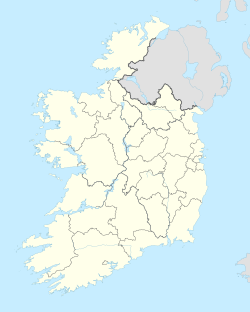Uaimh Thalún an Domhnaigh Mhóir | |
 Chart of the souterrain, from Thomas Wright's Louthiana | |
| Location | Donaghmore Kilcurly, Dundalk, County Louth, Ireland |
|---|---|
| Region | Castletown River Valley |
| Coordinates | 54°00′11″N6°27′34″W / 54.002939°N 6.459380°W |
| Type | souterrain |
| History | |
| Material | stone |
| Founded | between AD 700 and 1200 |
| Cultures | Gaelic Ireland |
| Site notes | |
| Archaeologists | Etienne Ryan |
| Condition | excellent |
| Ownership | private |
| Public access | yes |
| Official name | Donaghmore Souterrain |
| Reference no. | 526 |
Donaghmore Souterrain is a souterrain and National Monument located in County Louth, Ireland. [1] [2]
